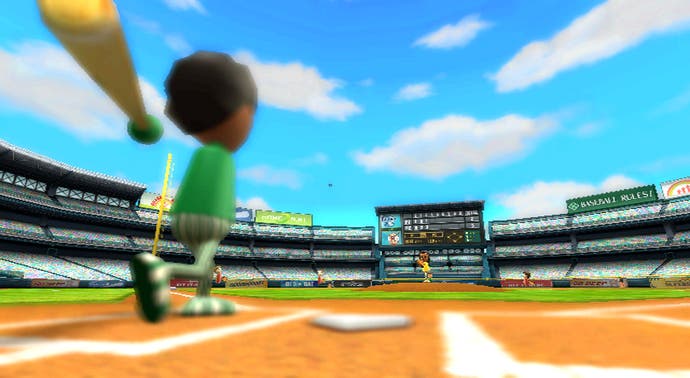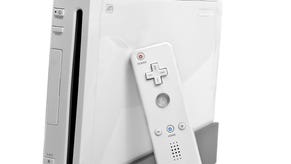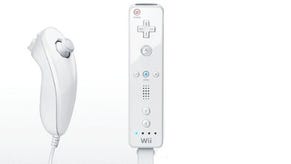Wii Sports
Revolutionary?
Golf picks things up for the finale though, doing a simpler job than seasoned golf games like Tiger Woods at the expense of some depth, but not as much as you'd imagine. With an overhead view and a power meter that fills and empties to differing degrees depending on the strength of your golf swing, the ability to take practice swings without disrupting play and a decent range of holes, this just works. It asks more of your mind and your preparation than your golf swing, which is somewhat at odds with the other games in the bundle, but it has another trick up its chequered woollen sleeve when it comes to retaining your interest, and it's this that proves to be one of Wii Sports' best kept secrets: its training mode.
This is "training" in the Kawashima sense: ongoing, and an enjoyable quest for new high scores every time you pick up the remote. Bowling's training modes are better than the actual 10-round game for single players - trying to pick up spares from increasingly difficult situations and manoeuvring the ball around barriers to strike the remaining pins being the two best scenarios - while golf training has the requisite putting and approach practices but also, best, a bit of wind-affected target work, where the idea is to land the ball on an island in a lake, measuring its descent so the first bounce falls within a high-scoring target area. Even boxing has its best moments in training, with the weaving game - designed to impart body movement skills - a sort Wii Sports' dodge-ball bonus.

Elsewhere, tennis training has you trying to amass an unbroken series of returns, alternating between slow baseline shots, net volleys and service sequences as the game demands. It also works to refine your targeting skills, having you aim for a narrowing field behind the other player that moves around to confuse matters. The third task involves playing against a brick wall, the idea being to hit pop-up targets somewhere on the wall - and the problem being that if you hit the wall too much and not the target, the brickwork starts to crumble, and eventually you run the risk of losing by sending the ball through a hole.
Aiming for high scores in these modes ought to keep you occupied when you haven't got anybody around to play with, enticing you back with medals to earn that won't be given up easily, and for those who imagine a daily habit, there's a "Wii Fitness" mode that uses a combination of tasks to generate a "fitness age", too. See, mum was wrong - you don't need friends! And really, despite Wii Sports' multiplay pretension - and don't get me wrong, it's certainly at its best played with other people - there's a surprising amount to do here if you're on your own. Tennis, again, does the best job, with the game keeping track of how good you are, measuring your progress with a graph like Brain Training on the DS, and offering tougher AI opposition as you progress. Even after investing countless hours on the training courts, it'll have you struggling, with AI players making more use of their doubles partners and spin shots, producing maximum-speed serves, and forcing you to lean on your own partner to avoid being bested.

Yet for all this affection, Wii Sports is still relatively slight, with no extensive campaign modes to be found, just exhibitions, and no online options either. It's been beaten up for this, of course, as well as for its presentation, which is certainly functional, perhaps as a corollary to its decision to use your "Mii" avatar as the in-game character (although, if you ask me, complaining that this doesn't look like Virtua Tennis 3 or Tiger Woods on Xbox 360 is a bit like whinging because Advance Wars DS doesn't look like Civilization IV). With less obsession over polygons, though, there's been more effort thrust into things like use of the remote's built-in speaker, which perfectly matches your swings, strokes and strikes, even if you've got the volume of the main game turned down. On the whole, I'm inclined to praise simple design when it translates into a game with as much broad appeal as this.
Because whatever line Nintendo takes with its promotion of Wii Sports - and everything up to now has positioned it as a sideshow - what it's actually got here brilliantly embodies the Wii's dramatic premise: that this kind of control can appeal to people who don't play games and people who used to play games as well as people who've been playing them for as long as we have. That's not to say that it's all things to all people, or that it's without flaws - but when you get lost in tennis late at night, you can be playing because your opponent's smart, and needs to be forced out of position with varied ground shots, top spin and precisely angled shots; or you can be playing because, golly Michael, come see what Tom's brought home, it's a sort of magical tennis racket. It's more than the parlour game that we all expected, then, but perhaps the beautiful thing is that it still can be that if you want it to.













